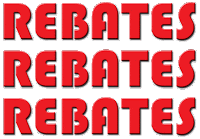Coronavirus Closedown – A call for new techniques
 We have been talking about selling during this Corona-stuff for a couple of weeks. After several conversations with those on the front lines of all this, I thought it might be appropriate to share what we have learned. As one of my good friends recently commented, “If ever there is a time for sharing within our industry, now is the time.” Consider this sharing.
We have been talking about selling during this Corona-stuff for a couple of weeks. After several conversations with those on the front lines of all this, I thought it might be appropriate to share what we have learned. As one of my good friends recently commented, “If ever there is a time for sharing within our industry, now is the time.” Consider this sharing.First, a note from Frank's Assistant:
We have written about sales calls for years and focused on
 |
| Sometimes they're sweet. |
Remember, we are all in this together. -Jenny
Phone calls are the best way to reach out.
While it seems more efficient to do email blasts or even personalized emails to key individuals, phone calls are far more personal, and we need to keep it all personal. Extending further, my personal observation surrounding emails is this: Many companies in a state of desperation are blasting emails out in even greater quantity. The incoming traffic into my email box is even worse than in days before I could even spell Coronavirus or Global Pandemic.
For existing customers
A quick call to an existing customer might simply be an update on the status of your company. I know many customers are curious as to the status of their supply chain. This could include information on shipping schedules as well as potential product shortages of which we are hearing of just a few (so far).
Since many of our customers are working remotely and you probably don’t have all their cell phone numbers, we recommend following up your voicemail with a quick email titled “Missed Call”. You might start your email off with something like this:
“I was reaching out to give you a status report of our situation and let you know the extent of the support we can provide during this crisis. I am currently working from home and discovered I did not have your mobile number. You can call or text me at my cell. The number is xxx-xxx-xxxx. If nothing else, can you please give me a quick update on your situation.”
“I tried you again today. I want to make sure our lines of support are open to you. We are still serving our customers and have the following services available. Troubleshooting and technical support are still operational. Our company is practicing the safety guidelines prescribed by the CDC but making daily shipments and serving our customers in their time of need. I am currently working remotely and discovered I did not have your mobile number. You can call or text me at my cell. The number is xxx-xxx-xxxx. I am still interested in a quick update on your situation.”
Once you do make phone contact, we recommend you quickly switch over to videoconferencing. The psychologists tell us human connection works better when you are speaking face to face. While teleconference is not as good as face to face, it does bridge the gap. Further, the tool allows you to show the customer potential solutions to their current situations.
For prospective and new customers
Many people have decided to take a hiatus from prospecting. We believe this is a mistake. Further, since some competitors have used the quarantine as an excuse to go on vacation, our chances of laying seeds now are greater than ever. However, the approach is somewhat different.
First, as with prospecting during normal times, I don’t recommend starting with a sales pitch. Instead, we recommend starting with something of this nature:
“As an essential business, we are reaching out to other organizations that we feel may be essential to the country and economy. I am calling to determine if there are things we might do to support you during this crisis. Would there be a good time for us to have a short video chat?”
If you get voicemail, follow-up with this email verbiage:
“I reached out to you by phone today because I felt you might be an essential business. Our essential business supports infrastructure and critical manufacturing businesses. I would like to compare notes to see if there is anything we might do to help you during this crisis. This will not be a sales pitch, rather a check-in on critical needs and support required to keep you fully operational.”
Once connected with the customer via phone or video, remember your no sales pitch promise. Don’t spew about your company’s line card, wonderful products or a long history of serving customers. Instead, focus on the customer’s unique situation. Try to identify issues and offer comments if you have a service that lines up with their needs. Offer to connect them with technology experts standing by at your company if the need arises.
What else should you know?
I believe, now more than ever, it is critical for a seller to know the following:
The current availability of inventory.
Shipping schedules - Is UPS running in your area? What is the estimated delivery in your geography? In an emergency, can the customer pick up needed parts?
Potential shortages from suppliers.
A parting thought
If you are using video chat, and I hope you are, look over the background of your camera picture. It’s important to have a business-like setting. A big pile of dirty laundry in the background might not make the best impression.
In this time of trouble, don’t be afraid to reference your customer or potential customer to a competitor who has what they need. I would suggest you do a warm introduction to get things handled. Your service and help will be remembered.
You will make more calls and more progress if you do things in batches. For instance, spend the morning researching contacts, phone numbers and all the rest. Then call in the afternoon.
And, finally…
We are all hearing the term essential business. I referred to it four times in this short article. Here is the government page describing it. https://www.cisa.gov/publication/guidance-essential-critical-infrastructure-workforce
Now to wash my hands for the 47th time today and move on.
Need advice on how to proceed in these uncertain times? Frank is happy to help customize a program for your remote team. Contact him today for a FREE 30-minute consultation.
Don't miss a single article. Click subscribe to the left above. We post once a month on average. We will never sell your name or spam your inbox...we promise!



Comments